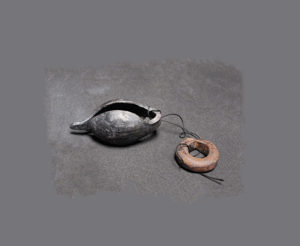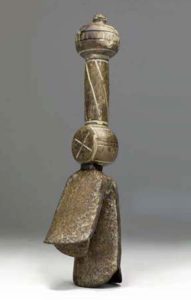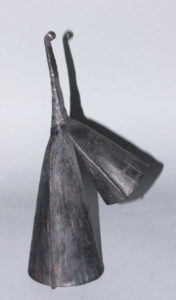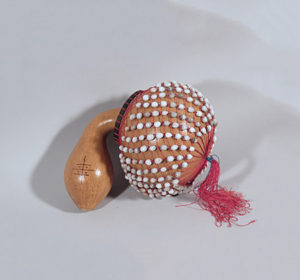Ewe
The Ewe people, who live in southern Togo and Ghana are the eastern neighbors of Asante. The speak various dialects of Ewe, a language of the Kwa branch of the Niger-Congo family. They are known for making small wooden statues and beautiful textiles with figurative motifs and symbols. The Aklama statues, roughly carved out of wood represent the protective spirits and are kept by the Ewe in their local shrines. Ewe religion is called Voodo, which means “spirit.” Mawu is considered the creator god, who created other deities.
The Ewe are also known for their dolls. Some scholars believe that they were used only as fertility dolls, other consider them toys. The women keep these dolls under their mattresses to ensure fertility. Dolls with broken arms or legs were considered by the Ewe as more powerful. They ensured that children would be born healthy, with their arms and legs intact.
The Ewe also produced clay figures of phallic form, called ‘legba,’ used as tribal or family fetishes representing the spirit of fertility and generative power. Like the Yoruba people in Nigeria, the Ewe carve ibeji twin figurines, for protection of survivor after death of a twin. They also produce animal figures in black clay, copper figures in lost-wax technique, representing animals and small masks.
Source: ewe (zyama.com)




